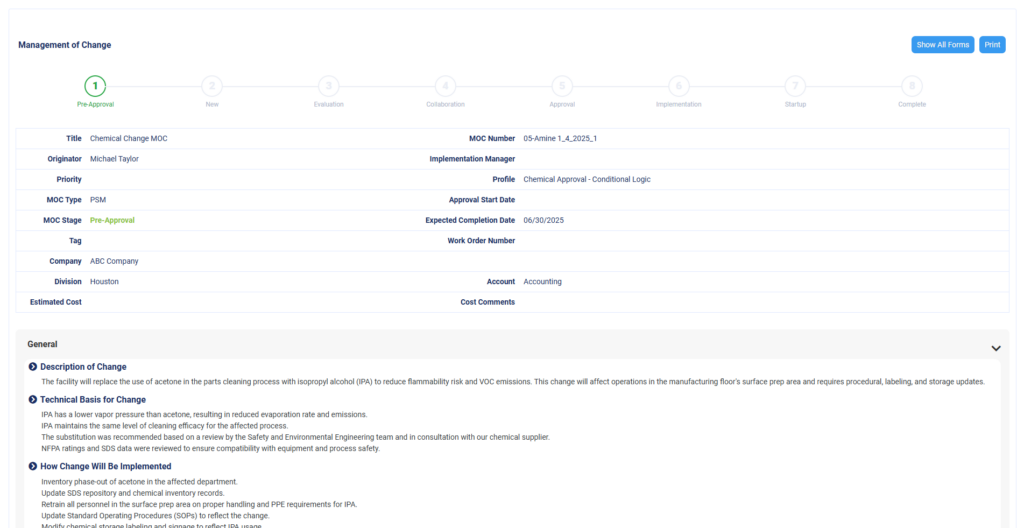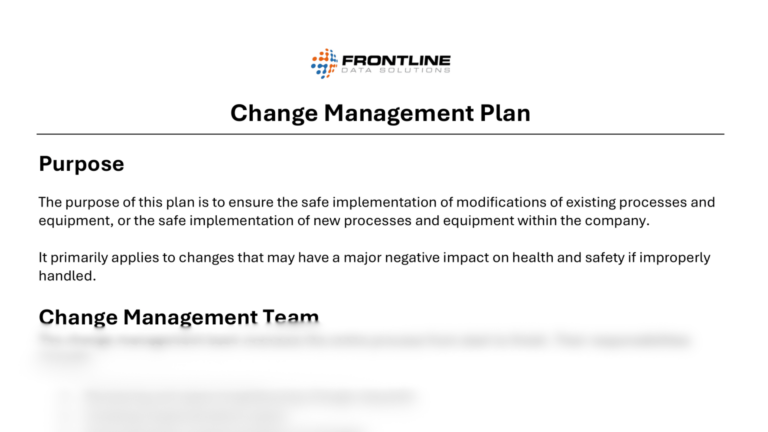Change happens constantly in any business, whether it involves a new process, a piece of equipment, or a company-wide policy shift. But how you communicate that change to your employees can mean the difference between a smooth rollout and a costly failure.
When employees don’t understand the reason behind a change or their role in it, confusion and missteps can occur. This can have a negative impact on your results following implementation. In some cases, these issues lead to lost revenue via process-related quality errors, missed deadlines, negative customer feedback, and market pushback. Good communication about changes will help your team properly prepare, so you can avoid these problems.
Free Template!
Download this free template to write a change management plan for your team.
How Employees Respond to Change
Employees react to change in different ways. Some may welcome the opportunity to improve things while others may feel uncertain, anxious, or even resistant. These reactions often stem from fear of the unknown, concerns about job security, or frustration over added responsibilities. That’s why it’s so important to know how to communicate change to employees.
To communicate change effectively, it’s important to consider these emotional responses. You should always show empathy, allow space for questions, and acknowledge that change can be difficult. By validating employee concerns and staying transparent, you foster a sense of psychological safety and support a smoother transition.
Best Practices for Communicating Change to Employees
A clear communication plan plays a critical role in any change management process. Here’s how to keep employees informed and engaged:
- Share updates before the change takes effect, so no one is caught off guard.
- Explain the purpose of the change and how it benefits everyone.
- Reinforce messages using verbal, written, and visual formats.
- Tailor the information to different roles and departments.
- Encourage employees to ask questions, share concerns, and offer input.
Be open-minded and receptive to feedback. Your team can help you uncover blind spots you might have had during the planning process. Getting their buy-in and input is crucial to successfully rolling out a new change.
Communicate Early Based on the Scope of the Change
The timing of when you communicate change to employees can make or break how well a change is received. For larger changes, ones that impact multiple departments or locations, make sure you announce the change as early as possible. Doing so gives employees time to understand the upcoming shift, ask questions, and adjust their workflows if necessary. The more time people have to mentally and practically prepare, the smoother the transition will be.
Even if the change is small, early communication is still the best practice. Because you never know exactly how employees will react, giving them a heads up will help you avoid unexpected issues. Just make sure that you don’t make an announcement before the major details are established. You don’t want people to anticipate a change that doesn’t come for a long time.
Clarify the Impact on Individuals and Teams
Along with timely communication, it’s critical to explain how a change will specifically affect each person or team. Generic messages can leave employees wondering what it means for their daily responsibilities.
Take the time to clarify who will need to do what, when the changes will go into effect, and what support is available. This level of detail helps reduce uncertainty and builds confidence that you’ve planned the change carefully.
How Change Management Software Improves Communication
Change management software does more than help you document your changes. It’s a great tool for planning your entire rollout process, including how to communicate change to employees.
With software like Frontline MOC, you can improve visibility and make sure your team doesn’t miss any critical steps. Plus, it adds guardrails to your process, so you can ensure that communication happens before changes go into effect. Here are some of the ways software can improve communication:
- Automated notifications keep employees informed at every step.
- Centralized documentation gives teams access to the latest procedures, checklists, and communication materials.
- Built-in workflows standardize how leaders share and approve information.
- Audit trails provide a record of who received each message and when, making it easier to confirm compliance.
Whether managing change at a single site or across multiple facilities, an MOC system helps everyone stay aligned and informed.

Set Your Team Up for Success
Clear, timely communication is one of the most important elements of any successful change initiative. By sharing updates early, you give employees time to process the change, ask questions, and prepare mentally and operationally. This proactive approach helps reduce resistance, build trust, and avoid confusion or mistakes once the change takes effect.
To support a smooth rollout, follow best practices like explaining the purpose of the change, clarifying how it affects everyone, and using multiple communication channels. When you combine these strategies with the structure and consistency of a change management software system, you create the foundation for safer, more efficient change management.





